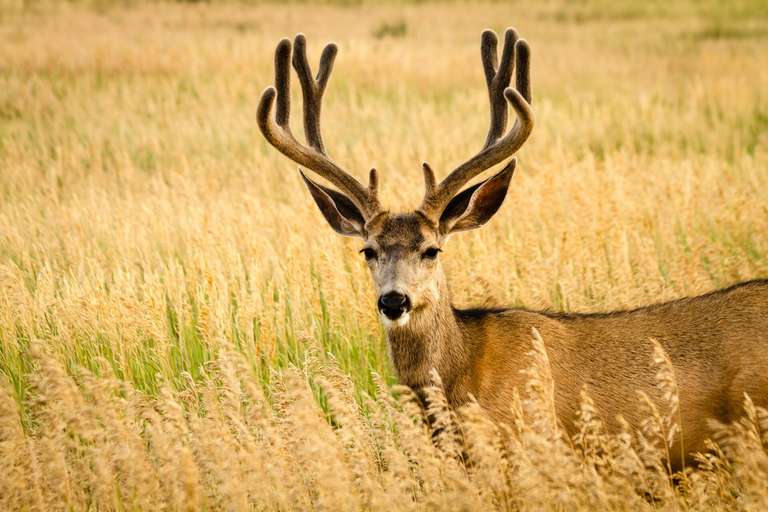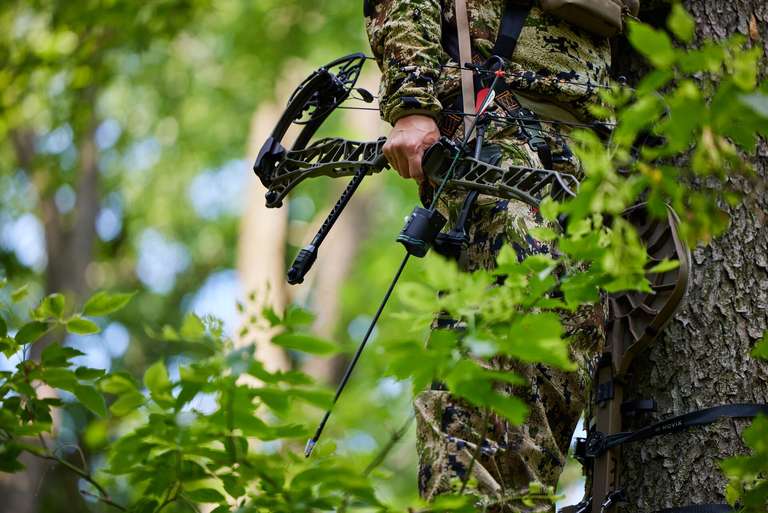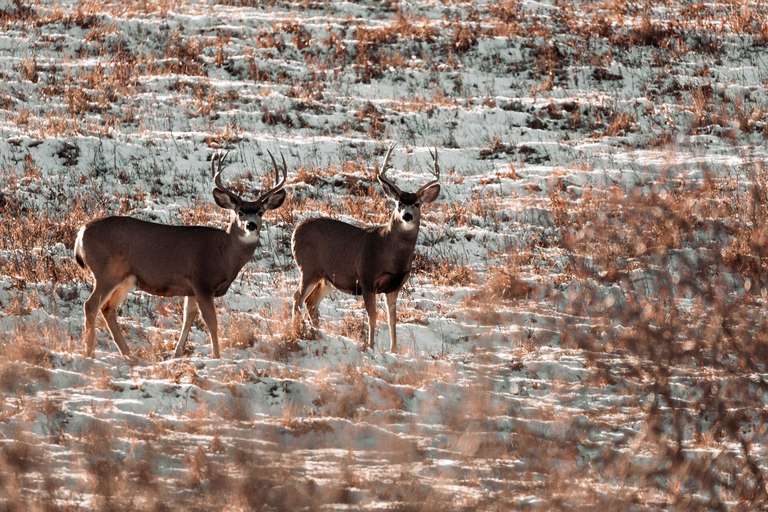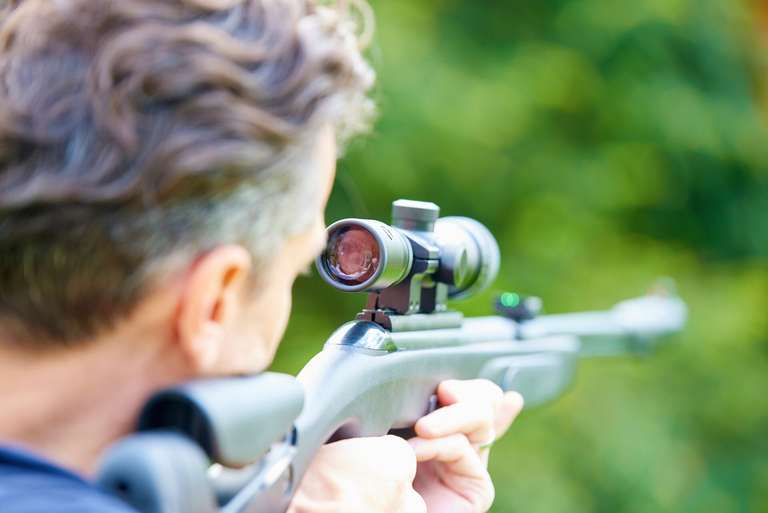How Far Can Deer Smell? A Guide to Not Getting Winded
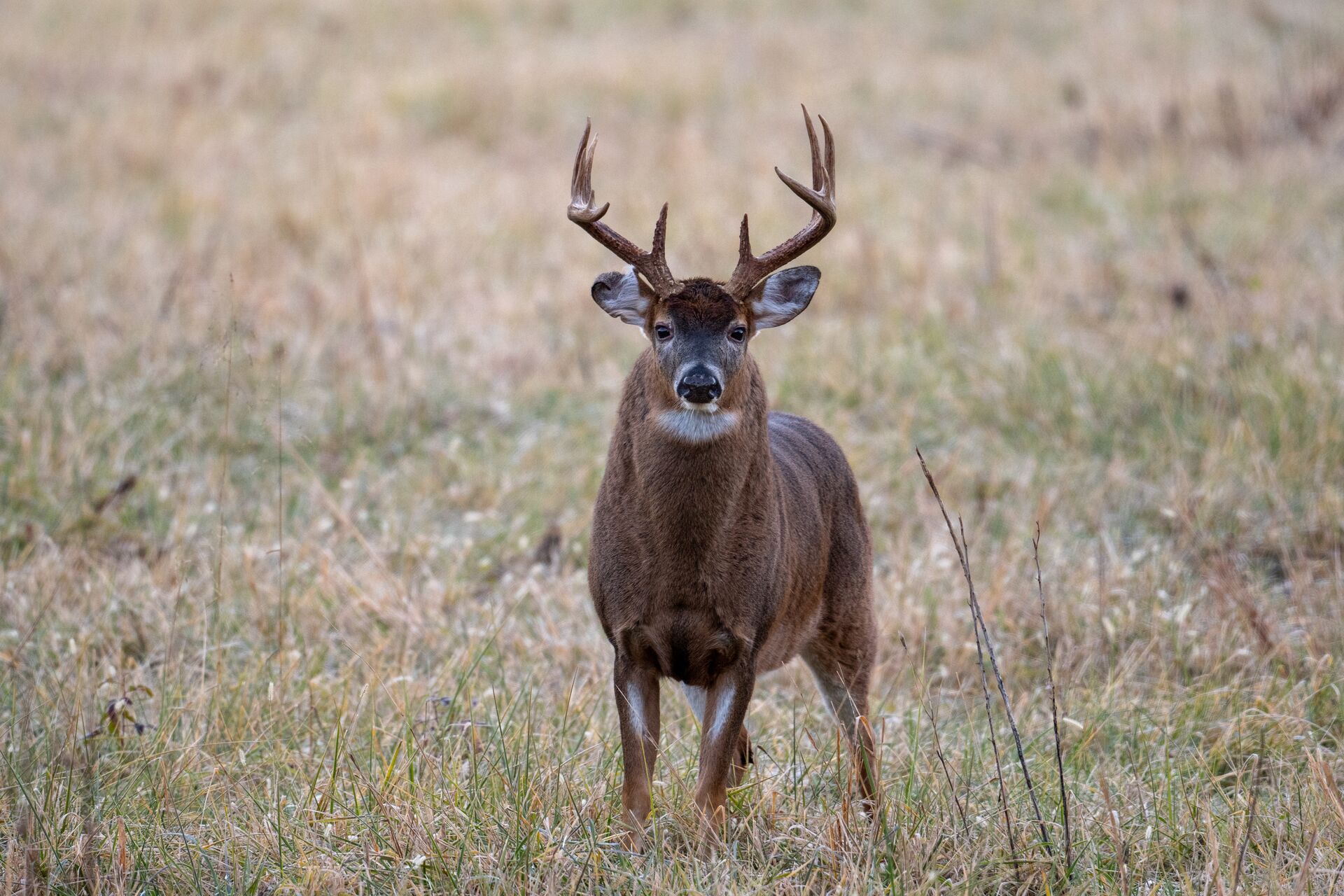
Understanding how far can deer smell is one of the most critical skills for a successful whitetail or mule deer hunter to know.
After all, nothing can be more frustrating than lining up your perfect shot only to get winded by a deer just before you pull the trigger. You can be silent, still, and have your human shape perfectly hidden, but your scent can have a mind of its own and blow the hunt.
While deer utilize all of their senses to detect danger, their sense of smell is their best line of defense, and it only takes a slight whiff of human odor to send a deer bolting to the next county.
Let's look at how far deer can smell and how to avoid getting winded!
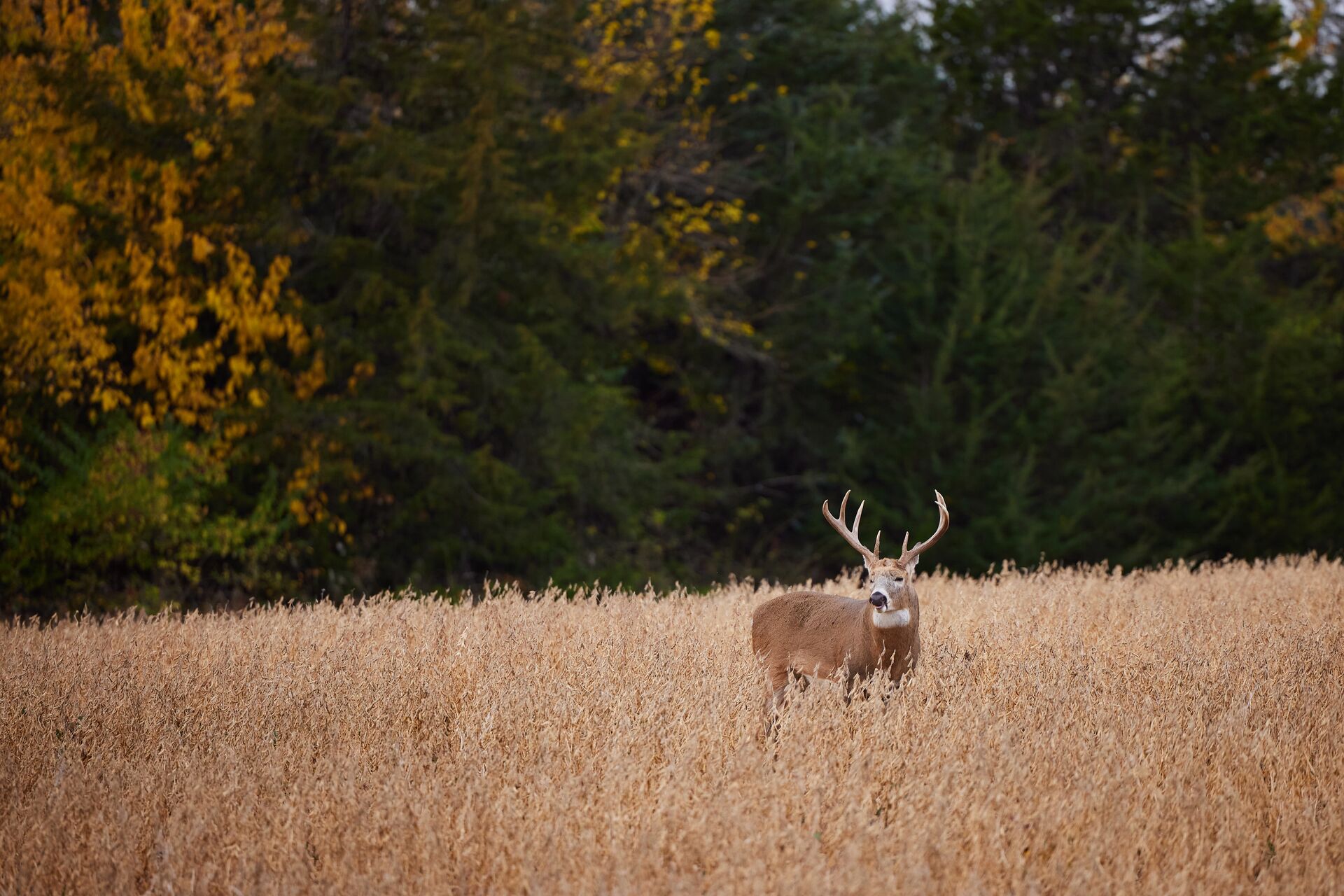
Why Scent Matters in Deer Hunting
Since a deer lives in a world where it’s on the menu for many predators, it relies on its nose for survival. For a mature buck, that sense of smell is perhaps its most trusted warning system.
Knowing the vital role that scent plays in a deer’s world can help you better understand how to:
- Choose the correct stand location that puts the wind in your favor
- Check your environment to use the wind more effectively
- Remain undetected long enough to take an ethical and lethal shot
Understanding how your scent travels, where it lingers, and how long it stays is what gives you an edge in planning your stalk or tree stand location.
How Far Can Deer Smell You?
Although a deer’s ability to detect human scent varies based on environmental conditions, you’d be surprised at just how powerful their noses are.
A deer has more than 290 million olfactory receptors at its disposal. To put that in perspective, humans have approximately 6 million, and dogs have between 100 million and 300 million. Armed with those receptors, a deer can pick up your scent from over half a mile away (about 800-1,000 yards) in ideal conditions.
Wind Direction and Speed
A deer’s detection range is primarily influenced by wind direction and speed. Light to moderate wind will carry your scent farther than calm conditions. However, don’t think you’ve lucked out if there’s no breeze during your hunt.
Still, air doesn’t eliminate the scent you’re always exuding. It simply allows your odor to accumulate in your area, creating a scent bubble that can persist for hours or days.
Humidity, Temperature, and Terrain
Humidity and temperature also affect the distance your scent can travel. High humidity keeps scent molecules suspended in the air for longer periods of time.
Variations in temperature throughout the day create thermals. These wind currents carry scent vertically. That means that even though the wind is in your favor, your scent can still be carried to a deer above or below you.
The surrounding terrain influences how the scent travels. Open plains and fields allow the smell to travel in a predictable flow. At the same time, vegetation and rocks can create turbulence and eddies that cause the wind to move in circular and unpredictable paths.
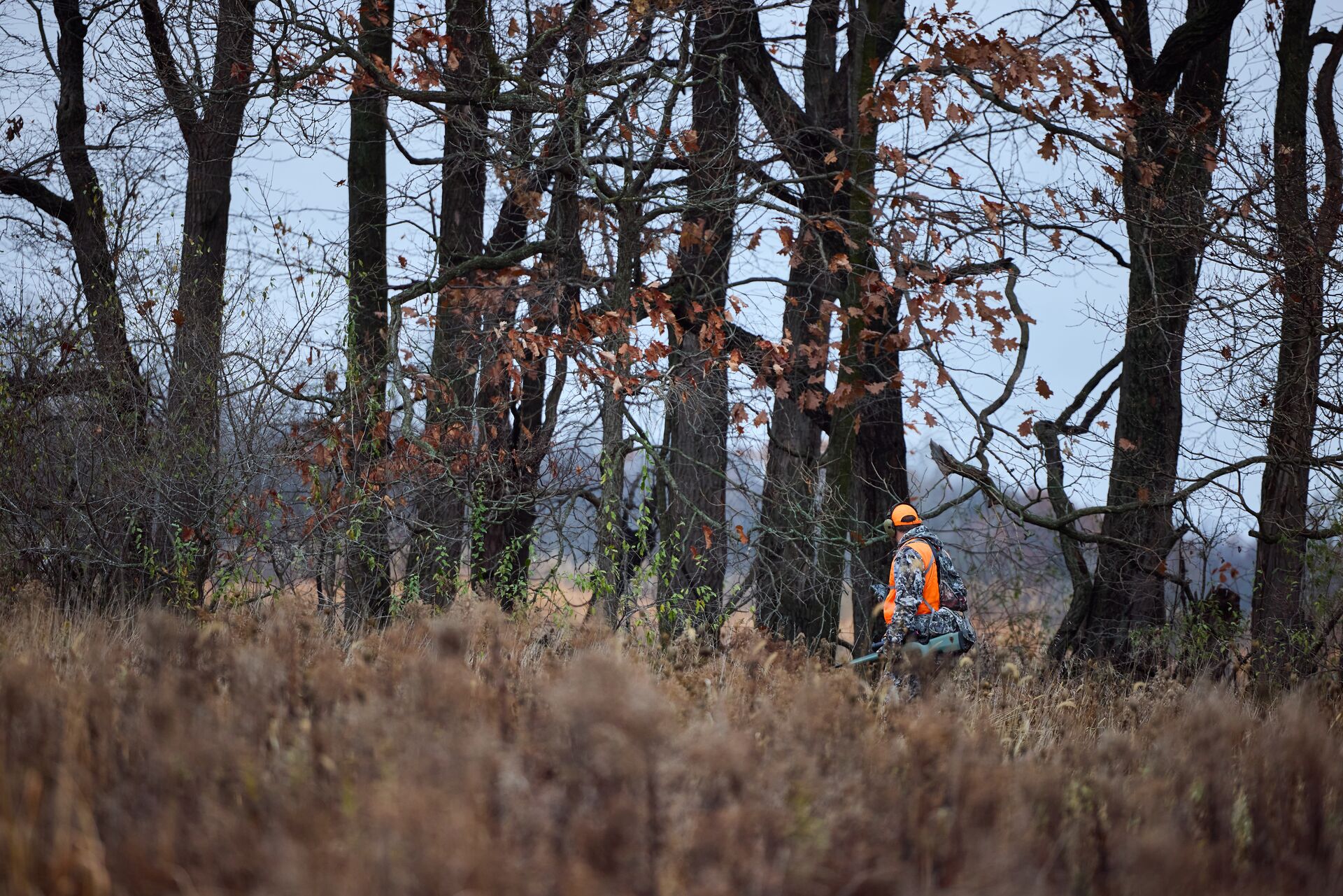
How Far Does Scent Travel in Deer Hunting?
Once you enter a deer’s habitat, your scent begins to infuse the surrounding environment. It can travel hundreds of yards downwind and up or down a slope. That's why you should be asking yourself, "How far does scent travel in deer hunting?"
While the wind will carry your scent far distances, it can also linger or move erratically in thick forests or swamps, where the smell will swirl and remain in a high concentration close to your location. This alone is a reason to avoid traveling on game trails to prevent contaminating them with your odor.
As I mentioned earlier, elevation matters when calculating how far can deer smell. Thermal currents will transport your scent in a direction different from the prevailing wind.
- In the morning, cooler air from higher elevations sinks into valleys, carrying your scent downward.
- The opposite occurs in the afternoon as the sun warms the surface and the warmer air rises, reversing the thermal current.
Understanding these shifting wind dynamics can help you plan your hunt more effectively and be aware of how your scent affects your ability to stay hidden.
How Long Does Your Scent Stay in the Woods?
If you want a precise answer to "how long does your scent stay in the woods," the best answer we can give is: Longer than you want.
Every footstep and brush or branch you touch leaves behind an odor that can linger for hours. If the air is humid or the vegetation is damp, your scent could remain until rain or heavy rainfall disperses the scent molecules. This means the scent you leave behind in the woods can often impact your success hours before your hunt even starts. I’ve seen estimates stating that a whitetail can detect human scent for up to 10 days.
Keep that number in mind when scouting for your tree stand, ground blind, or walking on game trails. Experienced bucks will avoid any area where they’ve scented recent human presence.

How to Avoid Getting Winded
While you can’t stop your body from releasing odor, you can minimize your scent signature with a handful of proven tactics.
These strategies include:
- Control Your Scent: The morning of your hunt, shower using scent-free soap. Also, avoid smoking, vaping, and chewing. You may also want to forgo using insect repellants.
- Control Your Gear’s Scent: Wash all of your hunting clothes, including socks, undergarments, gloves, and hats, in unscented detergent. Dry them outside and store them in a scent-free container.
- Use an Ozone Generator: Keep an ozone generator in your gear closet or vehicle to minimize lingering odors.
- Don’t Rely on Sprays: Sprays and wipes that mask or eliminate human odor can be helpful, but they’re not foolproof.
- Minimize Ground Scent: Every surface you touch retains a scent trace and will create a trail that leads to your location. Use established trails when possible and do your best to minimize contact with vegetation.
- Know Wind Direction: Carry powder puff bottles or milkweed seeds to test the wind in your location. You can also use an app like HuntWise’s WindCast feature to plan your hunt by studying local wind directions.
- Stay Downwind: Once you know which direction the wind is coming from, make sure you are positioned downwind from where you expect the deer to be. That means the wind should be in your face as you’re facing the deer.
- Be Mindful of Thermals: Remember that mornings move scent up and evenings push scent down.
Experiment with these tips to find the combination that works best to help you avoid getting winded!
Scent Control is a Smart Strategy, But It's Not Magic
Despite advertising claims to the contrary, no scent control product can make you completely invisible to a deer’s nose. Therefore, your realistic objective isn’t to become scentless. It’s to remain undetected long enough to take an ethical shot within your effective range.
Understanding the limitations of odor control and the environmental factors that influence how your scent travels can help you develop effective strategies for reducing odors.
Your best bet is to study how wind interacts with terrain features in your hunting spot and plan stand locations that use prevailing winds in your favor. Then, practice scent management techniques coupled with scent control products as supplemental tools rather than your primary arsenal.
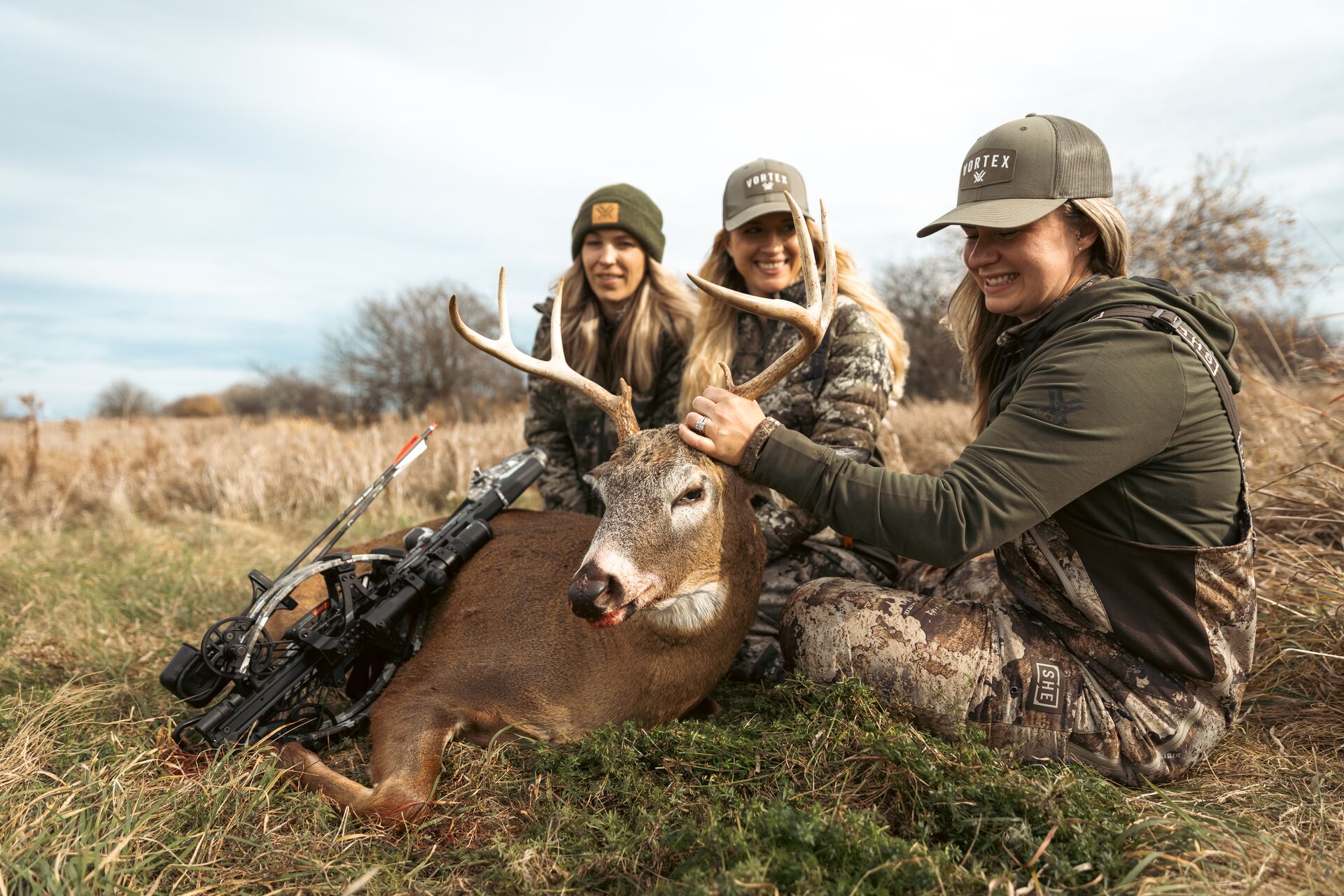
Put Your Scent and Hunter Safety Knowledge to Work This Season
Mastering scent control when deer hunting requires a healthy mix of common sense, attention to detail, and consistent practice in the field. Successful hunters take weather awareness to a new level by understanding thermal conditions, humidity changes, and even how barometric pressure can impact scent travel.
Armed with proper preparation and field skills, you can stay one step ahead of a deer’s nose to avoid getting winded at a critical moment in the hunt.
Make sure you're also armed with the right safety knowledge for successful hunts. The best way to do this is by taking an online hunter safety course through ilearntohunt! You’ll learn essential skills that cover deer behavior, shot placement, processing, and other hunting strategies to complement your scent control efforts.
Find the ilearntohunt course for your state, then stay safe and avoid getting winded this season!

Avoid getting winded when using the WindCast feature from HuntWise!
WindCast shows you wind speed and direction, allowing you to place your stands or blinds in the best location and enter your hunt area from the most favorable direction. Deer won't smell you coming!
Give it a try with a free 30-Day trial for ilearntohunt students! To take advantage of this offer, complete your course and visit your student dashboard.


